Ventenata identification and control
Information about the noxious weed ventenata. Ventenata is also known by its scientific name, Ventenata dubia.
About this weed
Ventenata is a non-regulated Class C noxious weed. This means property owners are not required to control this species on their property, though it is encouraged.
Ventenata is known as Ventenata dubia and it is in the grass family. Other common names include wiregrass, North African grass, softbearded oat grass. Its native range is in Europe and some temperate regions of Asia and northern Africa.
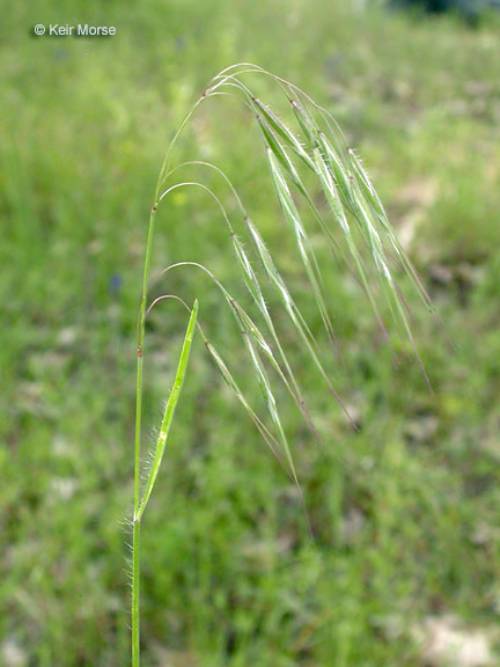
Why it's a problem
Ventenata is rapidly expanding in perennial (2+ year life cycle) grass. It can outcompete desirable grasses and has low forage value for grazing animals. Ventenata can significantly reduce hay production and other crop yields within a few years. In Idaho and eastern Washington, scarce remnant prairies are threatened by this species. It dries out early in the season which can pose a fire risk under the right conditions. Its shallow root system may also increase the likelihood of soil erosion.
Plant description
Ventenata is a winter annual (one year life cycle beginning in fall) that grows in dry, open, often disturbed habitats. It prefers sites that are wet in early spring but dried out by late spring. It is often found on south facing hillsides with shallow rocky clay or clay loam soils. The roots are shallow within the top two inches of soil. Mature plants reach six inches to two feet tall. Ventenata reproduces by seed with each plant producing up to 35 seeds. At maturity, the seeds typically fall to the ground close to the parent plant. The seeds are viable in the soil for less than two years.
Grasses can be tricky to identify so we recommend seeking expert advice if you think you've found this plant.
Identification traits are:
- Mature height can be 6 inches – 2 feet tall
- Stems have reddish black nodes (swollen sections along stem that resemble knees) in late spring.
- The leaves mostly grow on the lower half of the stem and have open leaf sheaths.
- A long thin leaf ligule (membrane where the leaf blade meets the stalk) is 1 to 4 mm long and often appears cut vertically (lacerate).
- The flowers are loosely branching resembling wild oats with a shiny look. June through July.
- Spikelet’s (basic unit of a grass type flower) usually have 3 small florets.
- The awns (long hair or bristle-like part extending from a floret) are twisted and bent.
When in doubt, take photos and report them on iNaturalist.
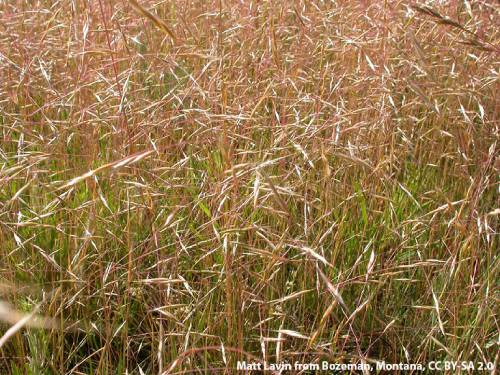
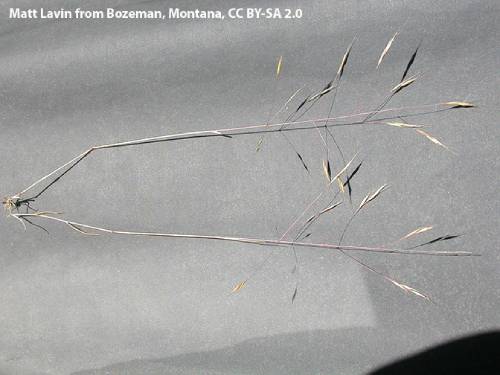
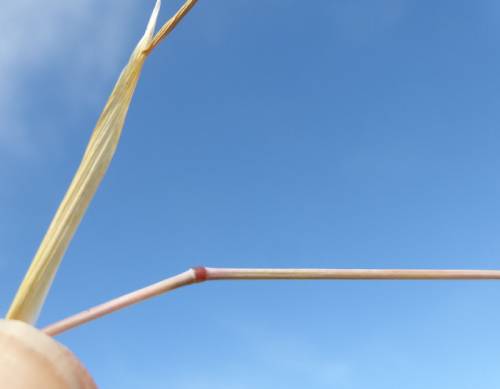
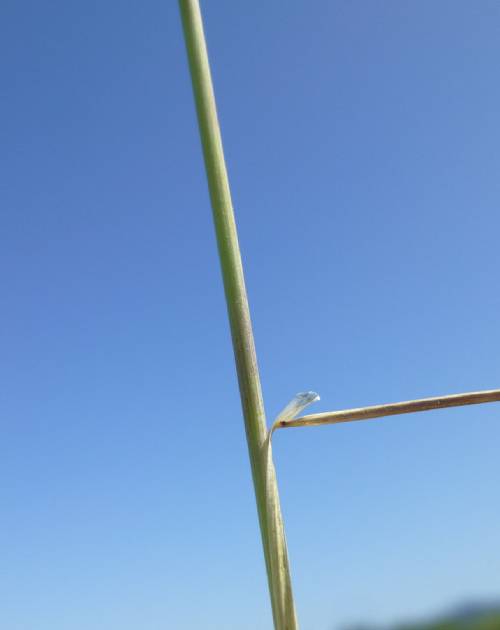
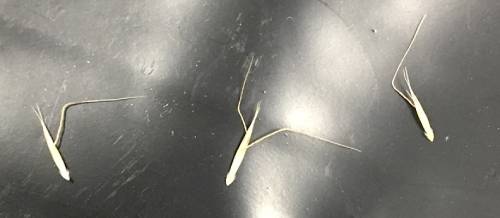
What to do if you find it
Property owners in King County are not required to control jubata grass and we are not tracking infestations. The King County Noxious Weed Control Board encourages property owners to remove it where possible and avoid introducing it to new landscapes.
Control methods
In areas with few weeds, it is important to act quickly before they become harder to control. Make a long-term plan as it often takes several years to get rid of most weeds. Start in the least infested areas first and then move into more heavily infested areas. To reduce costs and environmental impacts, please consider a combination of methods.
Prevention
Prevention is a much easier route than controlling a mature infestation. Seeds can be carried on shoes, clothing, tools and vehicles, so make sure to clean off after entering infested areas.
Manual control
Small infestations can be hand pulled when the soil is moist. Mowing is not recommended.
Cultural control
Burning has produced mixed results in different areas and should only be used in combination with other methods or not at all.
Sustainable grazing practices support healthier perennial grass populations to compete with weeds. Planting competitive native and non-invasive plants will provide competition to ventenata seedlings. Some competitive species include Idaho fescue (Festuca idahoensis), bluebunch wheatgrass (Pseudoroegneria spicata), Sandberg bluegrass (Poa secunda), ‘Sherman’ big bluegrass (Poa secunda ‘Sherman’) intermediate wheatgrass (Thinopyrum intermedium), smooth brome, grassy tarweed (Madia gracilis), and clarkia (Clarkia pulchella). Replanting should always be considered after any weed removal.
Chemical control
Stay safe when using herbicide:
- Always read the label before use.
- Wear a long-sleeved shirt, long pants, shoes, and eye protection.
- Follow state and local regulations.
Treatment in late fall after seedlings emerge is most effective, though weather can be difficult. Early spring treatment is also an option. Grazing first is helpful because desired species will be reduced, making it easier to target the ventenata. Check the specific type of herbicide for the most effective timing (on the label).
For specific chemical recommendations, please refer to the PNW Pest Management Handbook.
Disposal instructions
Bag and dispose of all plants with seeds in the garbage.

 Translate
Translate